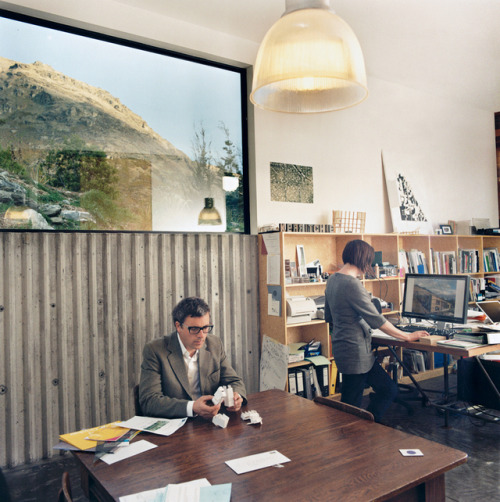- when you form the meaningless world into photographs, then form those photographs into a meaningful world -
Paul Graham - The Unreasonable Apple

Paul Graham - The Unreasonable Apple

(Paul Graham from "Troubled Land")
Last month photographer Paul Graham gave a presentation at the first MOMA Photography Forum that deserves to be widely read by creative photographers as well as those who promote and curate photography.
It's certainly one of the most succinct and clear arguments I've come across in recent years about the place and value of creative (or "art") photography.
In particular Graham makes an unapologetic case for the importance of "...photography that is taken from the world as it is" (my emphasis), as opposed to photography that is constructed from an artist's vision.
The text of the presentation can be found on Graham's website and deserves to be read in full, but here are a few extracts.
"...there remains a sizeable part of the art world that simply does not get photography. They get artists who use photography to illustrate their ideas, installations, performances and concepts, who deploy the medium as one of a range of artistic strategies to complete their work. But photography for and of itself -photographs taken from the world as it is– are misunderstood as a collection of random observations and lucky moments, or muddled up with photojournalism, or tarred with a semi-derogatory ‘documentary’tag".
What I find so refreshing about the whole presentation is that Graham essentially says is that its not an argument about the photography world versus the photography world. This form of photography is as creatively important as painting or sculpture or whatever and it's simply time for the curators and the critics to unblinker themselves and wake up to the fact. And it's also time for the best of them to bring their skills and intelligence to bear on conveying to the wider art world and the public at large what it is that such photography is about:
"I have to say that the position of ‘straight’ photography in the art world reminds me of the parable of an isolated community who grew up eating potatoes all their life, and when presented with an apple, though it unreasonable and useless, because it didn’t taste like a potato...
...The point is that we need the smart, erudite and eloquent people in the art world, the clever curators and writers, those who do get it, to take the time to speak seriously about the nature of such photography, and articulate something of its dazzlingly unique qualities, to help the greater art world, and the public itself understand the nature of the creative act when you dance with life itself - when you form the meaningless world into photographs, then form those photographs into a meaningful world."
Graham concludes with a final statement which he correctly (in my view) describes as an astonishing description at the heart of creative photography:
"So, what is it we are discussing here - how do we describe the nature of this photographic creativity? My modest skills are insufficient for such things. However let me make an opening offer: perhaps we can agree that through force of vision these artists strive to pierce the opaque threshold of the now, to express something of the thus and so of life at the point they recognised it. They struggle through photography to define these moments and bring them forward in time to us, to the here and now, so that with the clarity of hindsight, we may glimpse something of what it was they perceived. Perhaps here we have stumbled upon a partial, but nonetheless astonishing description of the creative act at the heart of serious photography: nothing less than the measuring and folding of the cloth of time itself."So go read it, email it around and print it off and stick it on the wall by your computer.
(and thanks to Terri Weifenbach for pointing me to this)







![[basmil.jpg]](https://blogger.googleusercontent.com/img/b/R29vZ2xl/AVvXsEhujw2Humgxxv1dVz7Mr8ogDBbWqiRhTqfDJiCW0OOIaYmv87swgo_j4gc4CNAM49QLbrNdqHowta5VM8Myljmebl-dpEoTx72khfwa0hzpfU_644CyHvppwaoHJXBDdNnhQb9w/s1600/basmil.jpg)















